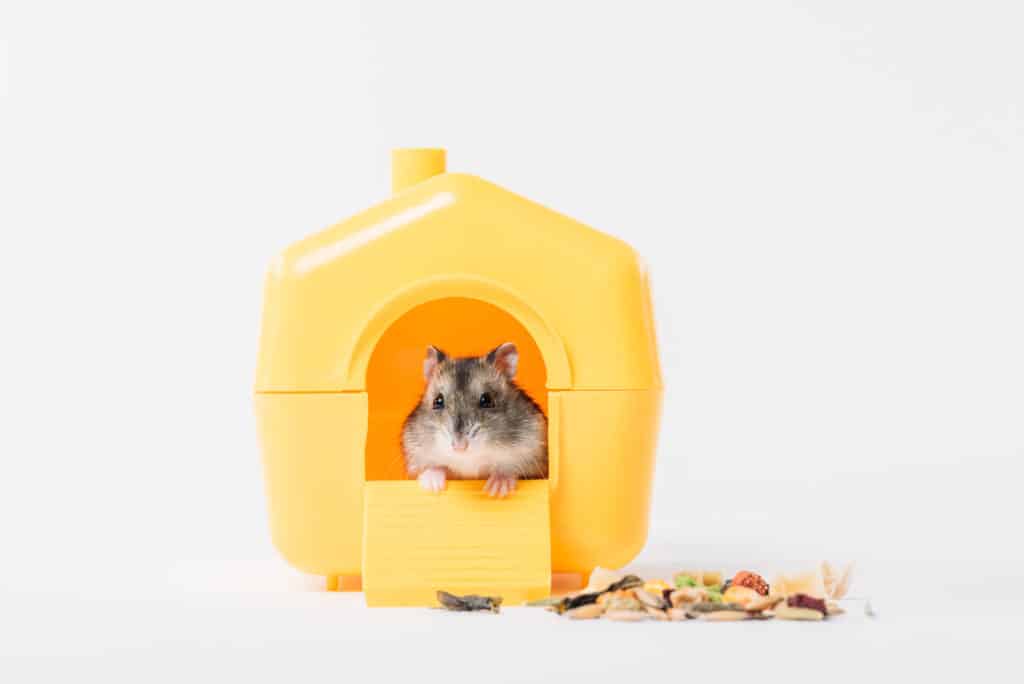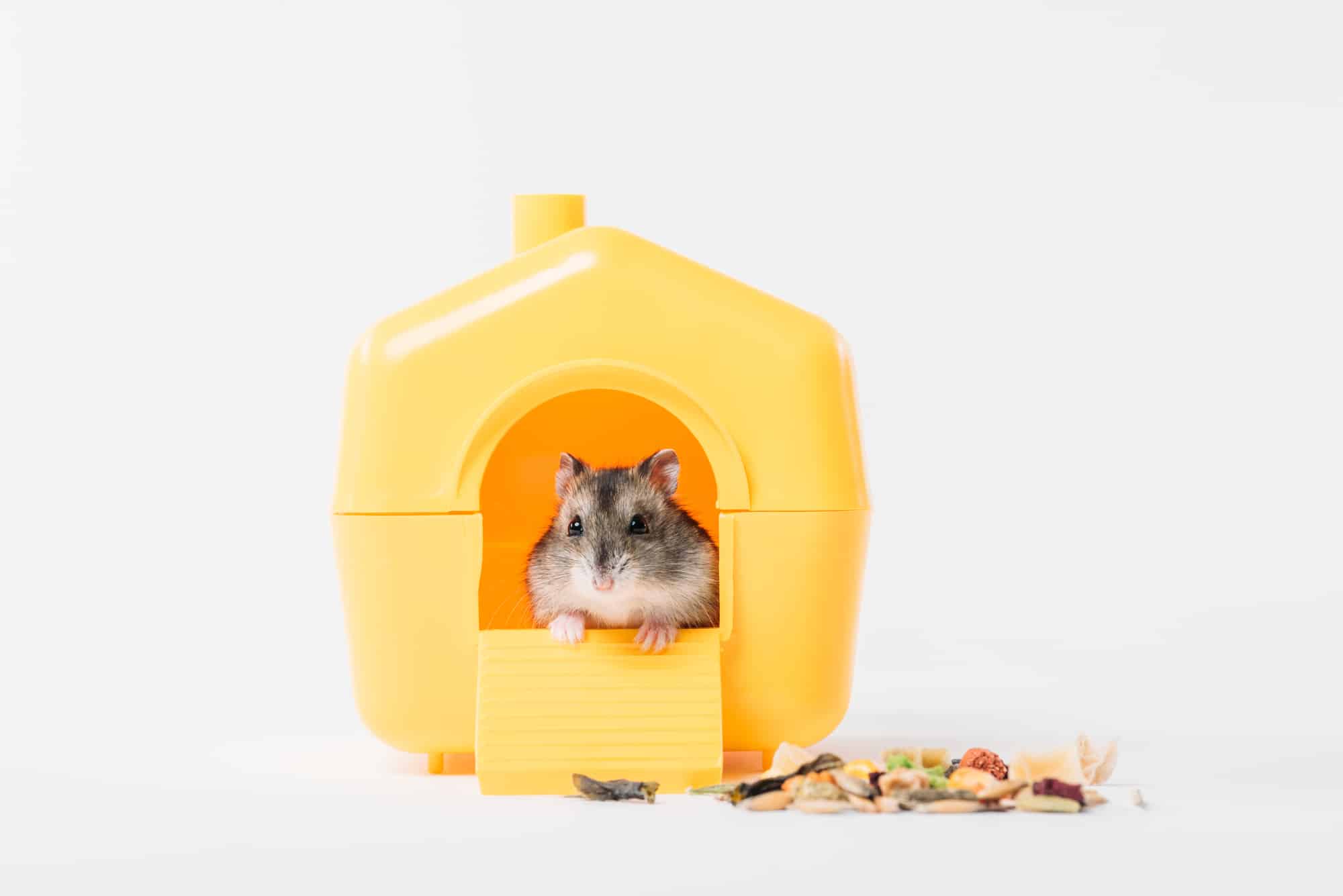Spring is one of the best seasons of the year. It brings sunlight that serves as a relief from the cold, harsh winter. It brings along with it colorful flowers that beautify streets and pathways. Spring also brings asparagus, which many people love. Oh! The taste of asparagus with a white yogurt sauce topping is something most people can’t resist.
So, if you are one of the people who like the taste of asparagus, you might have considered giving it to your pet hamster too. But can hamsters eat asparagus? Is it safe for them? What should you watch out for, while giving asparagus to hamsters? Continue reading, and find out.
Asparagus
Asparagus is a springtime vegetable that comes in green, white, and purple colors. Its long, pointy spears can be steamed, grilled, or roasted. But whichever method you choose to cook asparagus, it is, without doubt, a tasty, nutritious vegetable.
The asparagus plant is not an easy plant to cultivate. It is a herbaceous (has no woody barks) perennial (a plant that lives more than two years) plant. Each asparagus plant needs several square feet of space to grow (Source: The Spruce Eats). Moreover, it takes 3 – 4 years for the seeds to grow and produce edible spears (Source: Almanac). But once it starts producing edible spears, it can be harvested every spring for another 15 years or more. Yet, the short season and the long wait have made asparagus a costly, luxurious vegetable.
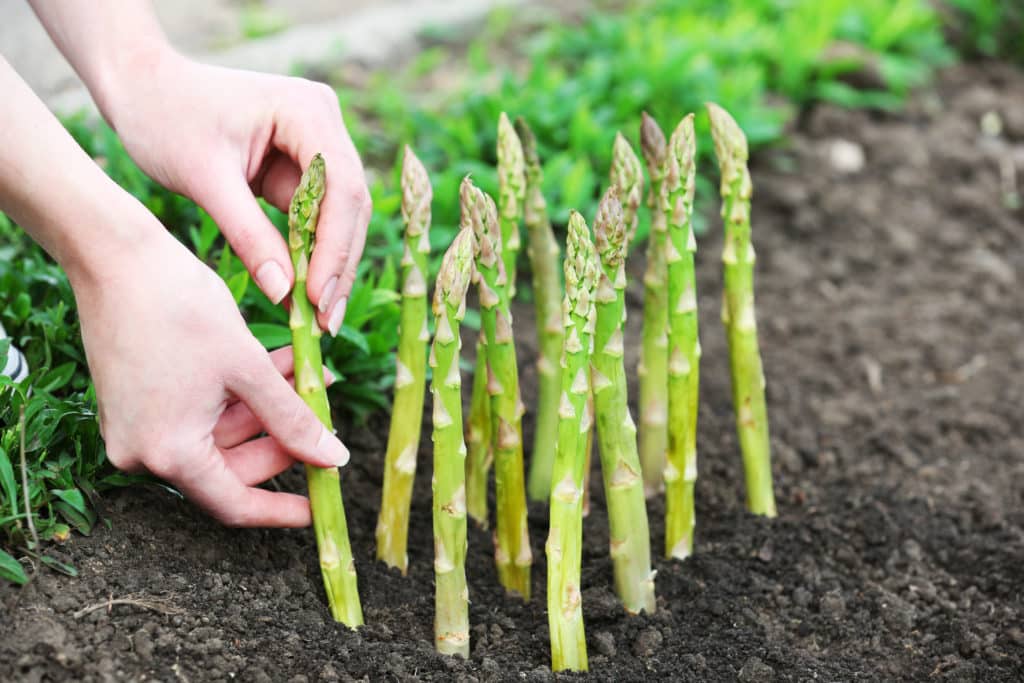
Origin
Asparagus might have originated in the eastern Mediterranean lands and Asia Minor. It is pictured in a structure of an Egyptian building, dating back to 3000 BC (Source: Wikipedia). The Greeks considered asparagus a sacred vegetable and an aphrodisiac. It was also used for its medicinal effects. The ancient Greek doctor, Hippocrates, used it to treat diarrhea and pains in the urethra (Source: Cultures de Chez Nous). But the Greeks did not cultivate asparagus. They only used wild asparagus. The Romans were the first people to cultivate it. They not only ate it in spring but also dried it for later use.
Asparagus slowly spread across Europe and was introduced to North America by the European explorers. Today, asparagus is cultivated worldwide. The biggest producer of asparagus is China, producing more than 46% of the global supply (Source: Freshplaza). It is quite surprising, as asparagus was only introduced to China in the twentieth century. Yet, in just 100 years, China has managed to become the world leader in the production of asparagus.
The nutritional content of asparagus
Asparagus contains many important vitamins and minerals that your hamster’s body needs.
The nutritional content of 100g of asparagus is listed below.
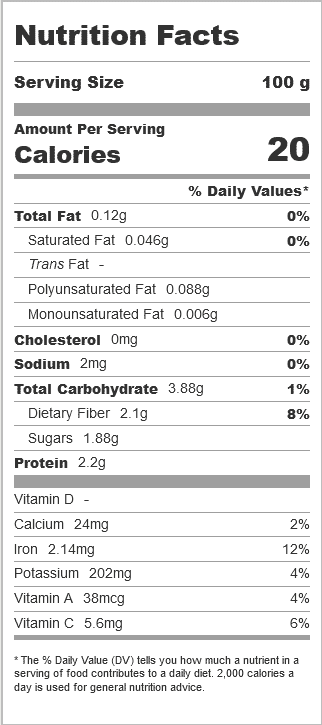
Can hamsters have asparagus? Is asparagus safe for hamsters?
Yes, hamsters can eat asparagus. Just like spinach (Recommended reading: Can hamsters eat spinach?), asparagus is a healthy vegetable, too. It contains many essential nutrients that your pet hamster needs to stay healthy. It is one of those safe foods you can give your hamster without worrying too much about the side effects. Some of its health benefits are listed below:
Health benefits
1. 100g of asparagus contains only 20 calories. This is not surprising since 94% of asparagus is just water. So, asparagus is a low-calorie, water-rich food. So, even if your hamster eats it often, he won’t get obese or diabetes. It will also help keep him hydrated.
2. 100g of asparagus contains 2.1g of dietary fiber. Fiber keeps your hamster full for a longer time. Thus, it prevents your hamster from overeating and gaining weight. So, asparagus can help your hamster lose weight.
3. Most of the dietary fiber in asparagus is insoluble fiber. Insoluble fiber is a type of dietary fiber that doesn’t dissolve in water. But it attracts water into your hamster’s stool. Thus, it makes your hamster’s stool softer and easier to pass without much strain. It promotes bowel health and regularity. Asparagus also contains a small amount of soluble fiber. Soluble fiber dissolves in water and creates a gel that may promote the growth of friendly bacteria in the gut. This keeps the digestive system healthy and strengthens the immune system (Source: Healthline).
4. Asparagus contains many essential vitamins. It is rich in vitamin K and vitamin B9. Vitamin K activates the proteins needed for blood clotting and keeping the heart and bones healthy. If your hamster doesn’t get enough vitamin K, he would bleed a lot even from a minor injury and might end up dying. Vitamin B9 helps his body produce DNA and RNA (Source: Mount Sinai). It is especially important when cells multiply rapidly, like infancy and pregnancy.
5. Asparagus contains moderate amounts of vitamin A, and vitamin C. Vitamin A improves vision and the immune system. It also helps organs like the heart, kidneys, and lungs work properly (Source: National Institute of Health). Vitamin C is another essential vitamin that has different uses in the body. It helps cells grow, develop, and repair themselves; helps the body absorb iron; improves the immune system (Source: WebMD).
6. Asparagus also contains small amounts of vitamin E. Vitamin E is an antioxidant. Antioxidants protect the body from being damaged by free radicals. Free radicals are volatile molecules that steal electrons from body cells, membranes, and DNA to become stable. By doing so, they cause severe damage to the body, sometimes even causing cancer. But the production of free radicals cannot be prevented because they are not only produced due to external factors like pollution but also by the body itself as side products when food molecules are converted into energy. However, they can be neutralized and made harmless if another source provides them the electrons they seek. Luckily, antioxidants can give free radicals the electrons they need. Thus, they protect the body from free radicals. So, consuming sufficient antioxidants can slow down the aging process.
7. But vitamin E is not the only antioxidant that asparagus contains. It contains other antioxidants as well. Flavonoids (plant chemicals) like quercetin, kaempferol, and isorhamnetin are a major class of these antioxidants. Experiments on different types of rats suggest that quercetin fights inflammation and enhances the immune system (Source: MDPI). The same compound also reduces blood pressure (Source: Aha Journals). Kaempferol is a chemical that inhibits cancer cell growth while protecting normal cells (Source: PubMed). Thus, it is effective in fighting against various types of cancer. Laboratory studies show that Isorhamnetin fights against cardiovascular and cerebrovascular diseases, inhibits tumor cell growth, reduces inflammation, and prevents obesity (Source: ScienceDirect).
8. Other antioxidants present in asparagus include carotenoids like beta carotene, Lutein, zeaxanthin, and other chemicals like tocopherol. Beta carotene fights against age-relative cognitive decline and protects the lungs from damage (Source: Medical News Today). Lutein and zeaxanthin are antioxidants that protect the eyes from damage by free radicals (Source: Healthline). Among all these carotenoids, beta carotene is the only one that is converted into vitamin A by the body. Tocopherol prevents age-related eye diseases, Atherosclerosis (Build-up of cholesterol in arteries leading to heart attack), and cancer (Source: Drugbank).
9. Purple asparagus contains pigments called anthocyanins that give the vegetable its color. This chemical reduces blood pressure. It also reduces the risk of heart attack and other heart-related diseases (Source: Healthline).
10. Asparagus contains important minerals that your hamster’s body needs. It contains high amounts of iron, which is necessary for the transportation of oxygen from the lungs to other parts of the body. Asparagus contains moderate amounts of potassium, calcium, and phosphorous. Potassium helps reduce blood pressure to healthy levels and move nutrients into cells and waste products out of cells. Calcium strengthens bones and teeth. A small amount of calcium is also required by the body for various functions. If your hamster doesn’t consume sufficient calcium, his body starts taking calcium out of bones and teeth for performing the required bodily functions, thus making your hamster’s bones and teeth weak. So, giving sufficient amounts of calcium-rich foods to your hamster is important. Phosphorous is a mineral that helps bones and teeth develop properly. It also plays a role in how the body uses carbohydrates and fats (Source: Medline Plus).
11. Asparagus contains some important amino acids. Indeed, one of the amino acids, asparagine, got its name from asparagus because asparagus is rich in it. Asparagine plays a role in the development and functioning of the brain (Source: Live Science). It also helps the body produce proteins, enzymes, and muscle tissues (Source: Drugbank). Asparagus also helps regulate the levels of the amino acid homocysteine, too much of which can cause heart diseases. Too much homocysteine can also block blood and nutrients from reaching the brain (Source: Medical News Today). It can also affect the production of hormones like dopamine, serotonin, and norepinephrine, which regulate sleep, mood, and appetite. Thus, asparagus can reduce the risk of heart diseases and prevent depression.
12. Asparagus can also improve the body’s ability to secrete insulin (Source: Cambridge University Press). Insulin helps the cells in the body absorb the glucose in the blood, which uses it for the creation of energy. It is also required for the breakdown of fats and proteins. So, if the body doesn’t secrete enough insulin, it might cause diabetes. Thus, by improving the body’s ability to secrete insulin, asparagus helps prevent diabetes.
13. Experiments on rats show that asparagus is a natural diuretic (Source: PubMed). So, it helps the kidneys get rid of excess salts (like sodium) and fluids from the body through urine.
Risks
Fresh asparagus is one of the safest foods for your furry friend. But as the saying goes, ‘Too much of anything is good for nothing,’ if your hamster eats too much asparagus, it can cause the following problems:
1. Asparagus contains a lot of water. So, if your hamster overeats asparagus, he can get diarrhea. And as you might already know, in hamsters, diarrhea can quickly escalate into a condition called the wet tail. Wet tail can become deadly if not treated promptly. Its symptoms include a wet tail with pieces of feces sticking to it, loss of appetite, and a hunched back. If you notice any of these symptoms, you should take your pet hamster to a veterinary doctor immediately.
2. Asparagus is a diuretic. So, if your hamster eats too much of it, he might experience dehydration.
3. The fiber in asparagus can add up if your hamster overeats asparagus. This could cause gastrointestinal problems like gas, bloating, and constipation (Source: Medical News Today).
4. As a low-calorie, water-rich vegetable, asparagus aids in weight loss. But if your hamster is already too lean, and you want him to put on weight, asparagus might be the wrong choice of food.
Different breeds of hamsters vs. asparagus
Asparagus is a great healthy food for your hamster. You can give your hamster asparagus without worrying too much about its side effects. But how much asparagus you can give your hamster depends on his breed.
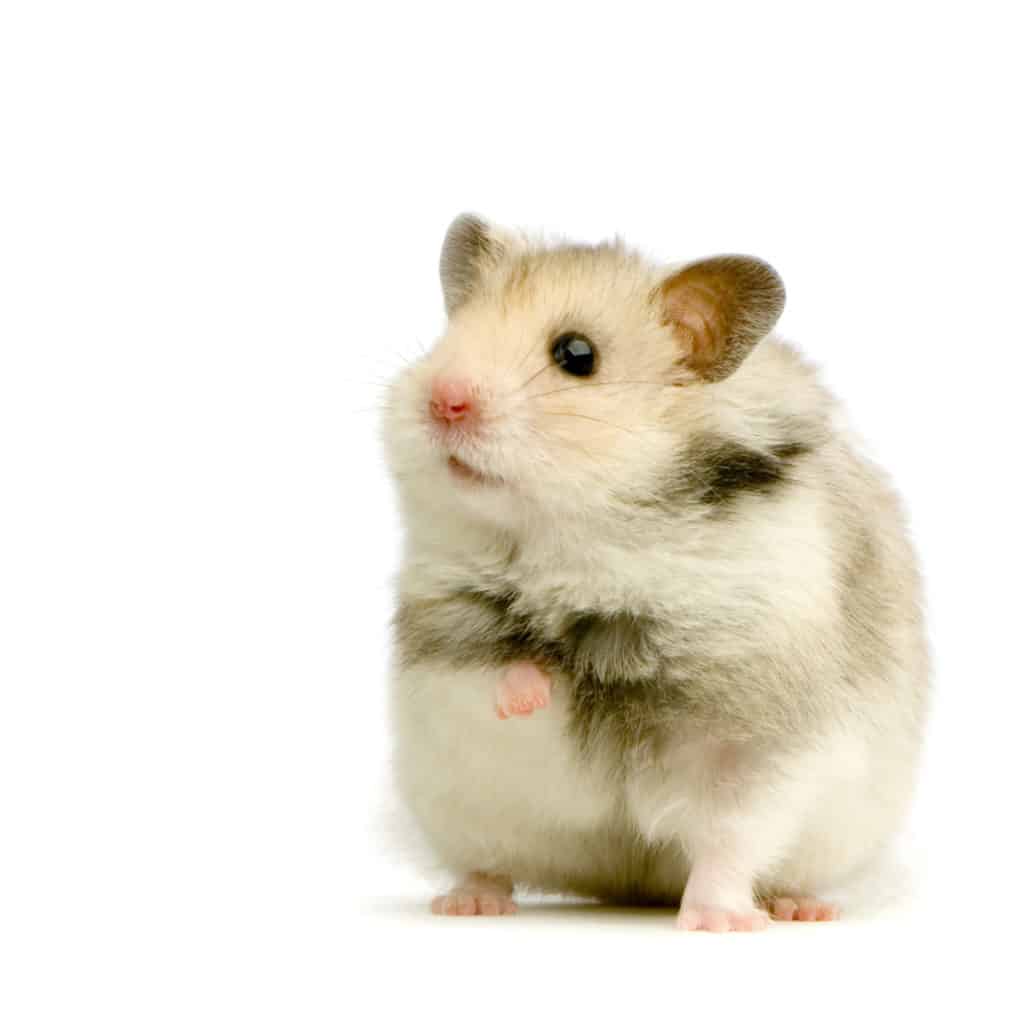
Can Chinese dwarf hamsters eat asparagus?
Yes, they can. But as the name implies, Chinese dwarf hamsters are one of the smallest breeds of hamsters. So, they can’t eat as much food as other bigger breeds of hamsters. So, you can give Chinese hamsters a small piece of asparagus once every three days (Source: Hamster care).
Can Campbell dwarf hamsters eat asparagus?
Yes, they can. But the same goes for Campbell hamsters, too, since they are small in size. They can eat a small piece of asparagus every three days.
Can Russian dwarf hamsters eat asparagus?
Yes, Russian dwarf hamsters can eat tomatoes. But like Chinese and Campbell hamsters, they, too, can eat only a small portion of asparagus every three days.
Can Roborovski hamsters eat asparagus?
Yes, they can. Roborovski hamsters are the smallest species of hamsters. But they are also the most active species of pet hamsters. So, they can eat more than dwarf hamsters, because they need more energy. So, you can give them a small piece of asparagus once every two days.
Can Syrian hamsters eat asparagus?
Yes, definitely. And as the largest breed of hamsters, they can eat more asparagus – about a small piece of asparagus once every day. But this chunk shouldn’t be longer than an inch.
FAQ
Can hamsters eat asparagus stalks?
Yes, hamsters can eat asparagus stalks. But remember that most vegetables you buy (if not organic) could be contaminated with pesticides. So, wash the stalk thoroughly before giving it to your hamster. Also, cut the stalk into small pieces and give only small pieces to your hamster to prevent choking.
Can hamsters eat raw asparagus?
Raw asparagus is highly nutritious. So, your hamster can eat it. But raw asparagus will lose up to 50% of its vitamin C content in 48 hours at room temperatures. So, you should give your hamster asparagus within a few hours after purchase. If not, you have to store it in the fridge in the right way.
What is the right way to store asparagus in the fridge?
- It is important that you completely remove the part of the spear that has dried out. So, cut an inch (or more depending on how much has dried out) off the bottom of the asparagus spears.
- Then put the spears in a glass jar such that they stay upright with the cut part on the bottom. Then pour water into the jar so that one or two inches of the glass jar is filled with water. Make sure all the cut ends are filled with water.
- Keep the jar in the fridge.
- Replace the water every day.
- Cut the bottom part once every five days or so.
Using this method, you can store the asparagus in a fridge for up to 1.5 weeks (Source: Food storage choices alternatives).
White vs. Purple vs. Green asparagus – Which is the best?
Even though all asparagus – green, purple, and white – are the same plant, Asparagus Officinalis, their antioxidant capacity differs significantly.
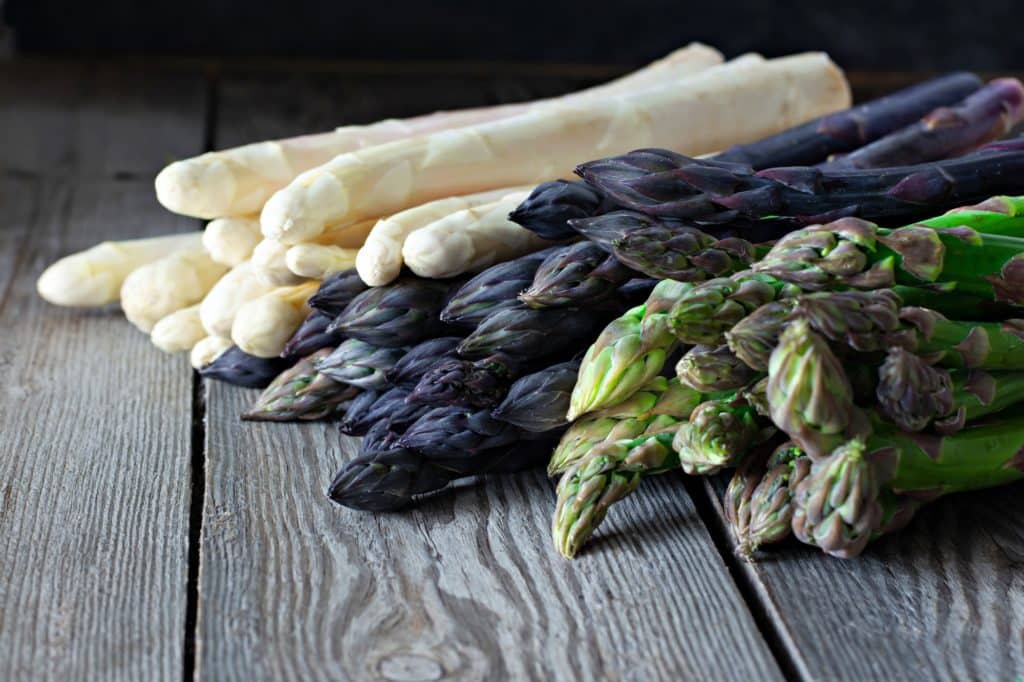
Purple asparagus contains the highest amount of antioxidants. This is due to the presence of anthocyanins, which give fruits and vegetables red and purple colors. Anthocyanins reduce blood pressure and the risk of heart diseases and heart attacks.
On the other hand, green asparagus does not contain any anthocyanins. But they contain chlorophyll and carotenoids. Chlorophyll gives the green asparagus its green color. But the amount of chlorophyll and carotenoids present in green asparagus is not as high as the amount of anthocyanins present in purple asparagus (Source: Nature word).
White asparagus might appear aesthetically pleasing to the eye. But to achieve this aesthetic beauty, white asparagus is grown either underground or covered to avoid exposure to sunlight. As a result, they are neither rich in anthocyanins nor in chlorophyll. Indeed, studies show that white asparagus is ranked last in terms of antioxidant activity (Source: PubMed).
So, purple and green asparaguses are healthier for your hamster.
Can hamsters eat cooked asparagus?
Cooking reduces the nutrients in asparagus. Particularly, the amount of vitamin C, a heat-sensitive vitamin, could decline by 52%. But you can minimize this loss by choosing a cooking method with little exposure to heat and water. So, steaming and microwaving might be better choices when compared to boiling your asparagus spears.
But if cooking affects the nutrient content, shouldn’t you just give your hamster raw asparagus? Wouldn’t that be the healthier option? Not necessarily.
Raw asparagus may contain a lot of nutrients, but it is hard to chew and digest. Cooking softens the fibers and makes them easier to chew and digest. Moreover, cooking could increase the antioxidant activity of asparagus. Studies found that cooking increased the antioxidant activity of green asparagus by 16% and that of white asparagus by up to 300% (Source: Healthline).
So, both raw and cooked asparaguses are healthy for your hamster. So, you can give raw asparagus on some days and cooked asparagus on some other days. Your hamster would appreciate the occasional change in texture and taste.
But while green and white asparaguses can be eaten raw or cooked, when it comes to purple asparagus, it is a completely different story. The chlorophyll in green asparagus is not soluble in water. So, even if you cook green asparagus, it would retain most of its antioxidants. But the anthocyanins in purple asparagus are soluble in water. So, if you boil it or roast it for too long, it will lose most of its antioxidants. So, when it comes to purple asparagus, giving it raw to your hamster is a wiser choice.
How to buy asparagus the right way for your hamster?
As explained in a previous section of this blog post, asparagus can go bad quickly if stored outside. And the right way to store asparagus in the fridge is to store it by placing it in a glass jar partly filled with water. So, if you go to a supermarket, only buy the asparagus that is stored in a glass jar. Never buy asparagus that is just kept fresh and bundled using a rubber band. It is not the right way to store asparagus as it might go bad after you purchase them. The only exception to this is a fresh farmers’ market. The asparagus there would have been recently harvested. So, the asparagus stalks that are kept bundled with a thread or rubber band would be fresh and might not go bad after purchasing.
Can hamsters drink asparagus juice?
No, asparagus juice might contain too much water. Hence, it could cause digestive problems for your hamster. So, never let them drink asparagus juice.
Summary – Key takeaways
A hamster should always eat a balanced diet. For the most part, his diet should comprise commercially available hamster food. But you can also include 10 – 15% of occasional healthy treats like fresh fruits and delicious vegetables in his diet.
Asparagus is one of those delicious vegetables that are also healthy for your hamster. Some of their health benefits are:
- Asparagus is a low-calorie, water-rich food that contains small amounts of dietary fiber. Hence, your hamster won’t put on weight by eating asparagus.
- Fiber keeps your hamster’s digestive system healthy.
- Asparagus contains several important vitamins – A, B9, C, K, and E.
- It contains several antioxidants that protect your hamster from free radicals. These antioxidants include plant compounds like quercetin, kaempferol, isorhamnetin; carotenoids like beta carotene, Lutein, and zeaxanthin; and chemicals like tocopherol. They strengthen your hamster’s immune system, protect him from cardiovascular and cerebrovascular diseases, inhibit the growth of cancer and tumor cells, and fight against age-related eye diseases and cognitive decline.
- Asparagus contains minerals like iron, potassium, calcium, and phosphorous. These minerals help produce blood, reduce blood pressure, and strengthen the bones and teeth of your hamster.
- It contains important amino acids that help produce proteins, enzymes, and muscle tissues. These amino acids are also needed for the development and functioning of the brain.
How to give asparagus to hamsters?
- Buy purple or green asparagus. They are rich in antioxidants.
- Buy fresh asparagus from a farmers’ market.
- If you buy asparagus from a supermarket, never buy asparagus that is bundled using a rubber band or a piece of thread. Only buy asparagus that is put inside a glass jar filled with two to three inches of water.
- Wash the asparagus spears properly in cold water to remove traces of pesticides.
- Remove the outer layer if needed – it is thick and difficult to chew and digest.
- Cut the asparagus into small pieces to avoid choking.
- Give asparagus in moderation.
- The small digestive systems of hamsters are susceptible to spoilt food. As fresh food, asparagus can go bad quickly. So, if your hamster doesn’t finish eating asparagus within a few hours, remove the uneaten pieces promptly.
- If you notice any weird behavior in your hamster, or if you notice symptoms like diarrhea, etc., consult a vet immediately.
